 481.
Rukmini Rani Arundale
(1904-1986)
At a time when the
Bharata
Natyam was considered a low and vulgar dance in India, Rukmini Devi Arundale
mastered this art form in order to popularize it during early 1920s. Later as a
part of Annie Besant's Theosophical Movement,
Rukmini Devi traveled all over the world as an ambassador of Indian culture. She
was also nominated the Rajya Sabha member twice.
481.
Rukmini Rani Arundale
(1904-1986)
At a time when the
Bharata
Natyam was considered a low and vulgar dance in India, Rukmini Devi Arundale
mastered this art form in order to popularize it during early 1920s. Later as a
part of Annie Besant's Theosophical Movement,
Rukmini Devi traveled all over the world as an ambassador of Indian culture. She
was also nominated the Rajya Sabha member twice.
She married the well-known
British
Theosophist Dr. George Arundale
(1878 - 1945).
It was she who protected and revived this dance by founding the
Kalakshetra Academy of Dance and Music in
1936. She made it an acceptable norm for girls (and even boys) from middle class
households to learn Bharat Natyam. Though operated like a modern institution, it
functioned as a traditional gurukula with prayers before the deity Ganapati,
vegetarianism, and a guru-shishya relationship. Throughout Tamil Nadu the guru-shishya
form of decentralized one-on-one learning spread in various ways as part of this
revival. Thus, far from being dead as intended by missionaries, colonialists and
their Indian cronies, Bharat Natyam again became well established as a spiritual
art form in South India, and started to achieve acclaim throughout India and
abroad. Kalakshetra grew into a university with a large campus in Chennai.
She as appointed a member of the upper
house of the Indian Parliament i.e. the Rajya Sabha in April 1952.
She defended the Hindu worship of various deities
images:
"All the songs we dance to are
of Gods and Goddesses. You may ask, why so many Gods and Goddesses? the only
reply I can give is, Why not so many Gods and Goddess?"

Lord Vishnu in the depiction of Churning of the
Milky Ocean at the Survarnabhumi International Airport in Bangkok, Thailand.
(image source:
webmaster's own collection of photos taken during a visit).
Refer to
chapter on
Seafaring in Ancient India,
Sacred Angkor
and Suvarnabhumi.
***
Rukmini did not support a vague
notion of a ‘universal religion’ and in fact specifically critiqued this sort
of generic spirituality, saying:
"Some people say, ‘I believe in
universal religion but when I ask them whether they know anything about
Hinduism, they answer in negative. They know
nothing about Christianity, nor about Buddhism or about any other religion
either. In other words, universality is, knowing nothing of anything. Real
internationalism is truly the emergence of the best in each….But
in India when I say India I mean the India of the sages and saints who gave the
country its keynote, there arose the ideal of one life, and of the divinity that
lives in all creatures; not merely in humanity."
She explained the deep meaning of
symbolism
in the ballad Kumarasambhava:
"Why does the story of Kumarasambhava please me?
It is because of the symbolism. Finally what Parvati wins is not passion but the
devotion and sublimation of herself. Parvati wins Shiva and she becomes united
with Him, because she has discovered the greater, indeed the only way of
discovering God. This is very beautiful symbology. Shiva burnt to ashes all that
is physical. So must a dancer or musician burn to ashes all thought which is
dross and bring out the gold which is within."
Rukmini Devi established an approach to dance-drama based on
the tenets of the "Natya Sastra". This was
completely new to the genre of Bharatanataym. Whether it was crossing the
Ganga or Ravana carrying Sita on a flying machine, she portrayed them in
suggestive movements.
She speaks of the
Ramayana and
Mahabharata as the 'essential
expressions of Indian dance'. Far from being man made stories, she speaks of Sri
Rama, Sri Krishna and Buddha in the following manner:
"Why was India a world power?
Because Sri Krishna had lived in this country, Sri Rama had lived here and so
had Lord Buddha. It was their Teaching that made India a great world power."
(source:
Breaking India: Western Inventions and Dalit Faultlines -
By Rajiv Malhotra and Aravindan Neelakandan
p. 88 - 124 and
Rukmini Devi - a catalyst for change - hindu.com
and
She elevated dance to a divine level - hindu.com).
 482.
John Keats (1795 - 1821) British poet. Although he knew little about India, was somewhat
drawn to her as the passage about the Indian maid in Endymion (1818) reveals.
482.
John Keats (1795 - 1821) British poet. Although he knew little about India, was somewhat
drawn to her as the passage about the Indian maid in Endymion (1818) reveals.
Keats was fascinated by the romantic aspect of Greek mythology but Endymion was
severely criticized at the time for its un-Greek quality. Keats wrote all the
poems which brought him such fame within twelve months of Endymion's publication.
(source:
India and World Civilization - By D. P. Singhal p. 246).
483.
Fred B Eiseman Jr
( ) author of the book
Bali: Sekala and Niskala: Essays on Religion, Ritual
and Art. He has lived in Bali since 1961 and has adopted Hinduism.
"Hinduism is
founded on the belief that there is order in the world, that the universe is not
random. Left entirely to itself, any natural system will tend toward a state of
maximum disorder; rocks roll downhill, cold things warm up, living cells die.
There exists everywhere in the universe a disordering force. Because order does
exist, there must be an equivalent organizing force.
What Hinduism seeks is an
equilibrium, a balance, between these forces or tendencies. Order is personified
as the gods, dewa and dewi or bhatara and bhatari. Disorder is personified as
the earth demons, bhutas and kalas. One can think of order as good, or positive,
and disorder as evil or negative. Or you can call order
dharma, and disorder adharma. "

Rama and Sita (Shinta) in the Batuan style of
painting in Bali.
Hindu man, faced with the overwhelming problems of life, sees Siwa as a vigorous force that energetically breaks down
everything that Wisnu has protected and Brahma has produced.
(©
2011
image source:
webmaster's own collection of
paintings).
Refer to
A Tribute to Hinduism: Thoughts and Wisdom spanning
continents and time about India and her culture - By Sushama Londhe
***
"Hinduism
recognizes the universe as an ordered whole of which each person, each animal,
and each thing is an integral part.
And each of these parts stands in a definite
and established relationship to every other part - this relationship is dharma.
A Hindu feels that his actions, his karma, must be in harmony with his dharma,
"duty" or "order." A Hindu cannot look at the world from the point of view of
his own interests, without regard for those of his fellow men, his fellow living
creatures, and his fellow inanimate objects. His karma must be related to them
and to his own dharma. If his karma fulfils his dharma, he contributes toward
order and harmony. If it does not, he contributes toward disorder, chaos, and
adharma."
"The five
fundamentals of Hindu philosophy are: Brahman, the one God, atman, the
imperishable spirit, samsara, reincarnation; karma-pala, action and resulting
reward and punishment; moksha, uniting with God after the disappearance of
desire. These are called the Panch Crada, or "five principles."
"The Gayatri mantra
is very popular mantara and is called the Trisandhya. It is considered so
important that for example, it is recited every day when the Denpasar television
station, TVRI, opens its broadcast schedule. This mantra comes from the most
sacred verse of the most ancient religious text extant -
The Upanishads."

The Barong dance of Bali depicting Dewi Kunti
of the Royal court of Hastinapura - from the Epic of Mahabharata.
(©
2011
image source:
webmaster's own collection of photos taken during a
recent visit).
Refer to chapter on
Hindu Scriptures and
Symbolism in Hinduism
***
"The
two greatest epics of Hindu literature, the Mahabharata and the Ramayana, were
hugely influential. Three thousand years after they were composed, one has only
to visit a Wayang Kulit - shadow puppet - performance in one of the villages in
Bali and see the rapt attention of the audience to understand the grip that
these wonderful stories have upon Hindus even today."
"In Bali, Siwaism
is by far the most important than Wisnu. Hindu man, faced with the overwhelming
problems of life, sees Siwa as a vigorous force that energetically breaks down
everything that Wisnu has protected and Brahma has produced.
Why the linggam as
the symbol of Siwa? The linggam is symbolic of creativity, not of destruction.
Siwa not only a destroyer, but also a creator, and the dance is an accompaniment
to the perpetual dissolving and reforming of the world. There is nothing obscene
about the linggam symbol to the Hindus. Siwaism is a system of beliefs which
requires the most extreme self-discipline, asceticism, and intellectualism.
Mahatma Gandhi wrote that the first time he learned that linggam were obscene
was when he was studying a missionary's book."
(source:
Bali:
Sekala and Niskala: Essays on Religion, Ritual and Art - By Fred Eiseman Jr
p. 11 - 24).
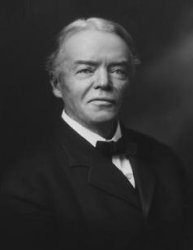 484.
Josiah Royce (1855 - 1916)
as an American
objective idealist philosopher. He is regarded as America's most outstanding
representative of absolute idealism. He was "America's first academic
philosopher seriously to study Indian thought" and "he was also" as rightly
pointed out by Professor D M Riepe, "one of
the first Americans to show interest in the Sankhya philosophy, presumably
because he took each different development of realism as a target on which to
practice his idealistic gunnery". Though he clearly acknowledges Buddhism to
have "given us some of the best expression of the Titanic individualism," he had
declared Buddhism to be a "religion wholly grounded in self-denial."
484.
Josiah Royce (1855 - 1916)
as an American
objective idealist philosopher. He is regarded as America's most outstanding
representative of absolute idealism. He was "America's first academic
philosopher seriously to study Indian thought" and "he was also" as rightly
pointed out by Professor D M Riepe, "one of
the first Americans to show interest in the Sankhya philosophy, presumably
because he took each different development of realism as a target on which to
practice his idealistic gunnery". Though he clearly acknowledges Buddhism to
have "given us some of the best expression of the Titanic individualism," he had
declared Buddhism to be a "religion wholly grounded in self-denial."
Royce has also made
numerous references to Hindu philosophies and criticized Vedanta schools of
Hinduism and the Upanishadic philosophies as untenable mysticism, while
curiously enough his own views are hardly different from Ramanuja's Vedanta.
It is an established
fact that Royce had read Indian philosophies and was deeply influenced by them.
Riepe has written that: "He felt much of Indian thought to be close to his own
and he used it to clarify his own visions.."
Kurt F Leidecker
(1902 - 1991) professor
of philosophy observed
this about Royce:
"Despite several
inaccuracies and misinterpretations on the part of Royce of Indian concepts he
must be given credit for having called attention to the Indian world of thought
and its deep significance. He made it clear that it had
some relevance to western religious thinking. Above all, he educated the
intellectuals among the Christian laity to an appreciation of another realm of
religious and philosophical thought not usually studied by them. In a sense,
then, he continued the work so heroically started by
Emerson and Thoreau."
(source:
T S Eliot and Indic Traditions - By Cleo McNelly Kearns and
The Self and the World in the Philosophy of Josiah Royce - By Bhagwan B Singh
p. 1 - 26).
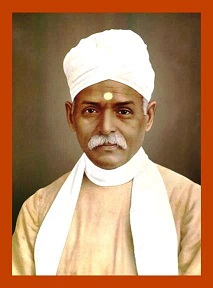 485. Pt.
Madan Mohan Malaviya (1861 -1946)
was an Indian politician,
educationist, and freedom fighter notable for his role in the Indian
independence movement and his espousal of Hindu nationalism. He was
a scholar and a national leader during the freedom
struggle wrote on the Bhagawad Gita,
485. Pt.
Madan Mohan Malaviya (1861 -1946)
was an Indian politician,
educationist, and freedom fighter notable for his role in the Indian
independence movement and his espousal of Hindu nationalism. He was
a scholar and a national leader during the freedom
struggle wrote on the Bhagawad Gita,
" It brings to men the
highest knowledge, the purest love and the most luminous action. It teaches
self-control, the threefold austerity, non-violence, truth compassion, obedience
to the call of duty for the sake of duty. It is a treasure house of Dharma not
only for Hindus but for all mankind."
(source:
Hinduism: Triumphs and Tribulations - By S K Kulkarni
p. 49).
486. Lt.
Col. Hamendar
Bhisham Pal ( ) served in the Indian army - in the Artillery and
Infantry Regiments and was on active service during Indo-Pak Wars of 1956 and
1971. He has written several books including
The Temples of Rajasthan and
The Plunder
of Art.
He has observed most eloquently about the on
going and relentless plunder of Indian art to satisfy the Western greed and
cultural vandalism.
"A
nation’s ancient treasures and monuments are the soul of its history and
culture. They are part of a nation’s pedigree and mute chronicles of change and
refinement as society moves through a process of challenge and response into its
current character and mores.
India has a rich past. Temples and other
edifices are standing monuments which prove beyond doubt the existence of a rich
culture and lively society. These places contribute much to enrich the culture
of the soil, for it was here that devastation as well as construction moved
almost side by side. History was written and rewritten, made and remade. Hordes
of invaders kept the people and their Hindu rulers engaged in battlefields, yet
their faith in their religion was never lost. Invasion, no doubt, molded the
people’s way of life but it helped them rely on their religion in a more
vigorous form for solace and contentment. Hindu temples were pulled down by the
invaders but they were rebuilt sooner than they were destroyed. The statues from
these temples were taken to safer places by the people so that they could
continue to pursue their religious faith. Despite the passing of many centuries,
these temples have remained intact to tell us the story of the past."
The temples were built not only to meet the religious needs of the people but
also to satisfy the spiritual urges of the rulers.
Defaced and mutilated figures in these shrines tell us of
pathetic tales of barbarity of the iconoclast invaders.
Iconoclasm could not shake the faith and will of the worshippers. New shrines
are still being constructed. Men come and go but religion and its monuments
remain.
The temples of Khajuraho, Konark, Ramgarh and Ranakpur are notable for their
erotic sculptures. One really wonders, why these temples have sculptures
displaying varied postures of sexual union? It is not unusual to find a
western beholder standing aghast at the sight of such erotic sculptures which
have no place in the Christian Church. A foreigner suddenly finds himself
confronted with the sacred principles of Suchita on the one hand and frank
sexual representations on the other hand. The explanation is found in
Hindu
mythology. The creation of universe is based upon the consummation of the male
and female. An open representation of this sexual union is not a symbol of
degeneration of licentiousness but it signifies the philosophy of creation."
Whatever may be the origin of erotic sculptures it is certain that these marvels
in stone were products of sublime inspiration. There can be no two opinions that
philosophy and religion were the base of these exquisite pieces of sculpture. It
would be unjust to consider them as patterns of sex behavior, representing the
moral and social degradation of the age. These monuments were dedicated to the
discovery of truth and beauty. In fact, the coital scenes were to serve as a
‘catharsis’ to the worshippers.
Experts have pondered over the reasons for antique thefts and their smuggling to
foreign countries. They believe, it is not exactly one of simple theft by people
out to earn a quick buck. It is basically a phenomenon that can be explained by
psychologists.
They term it as ‘acquisition of culture’
by people who lack it.
India’s art heritage cannot be evaluated in terms of
money, it is priceless and cannot be replaced.
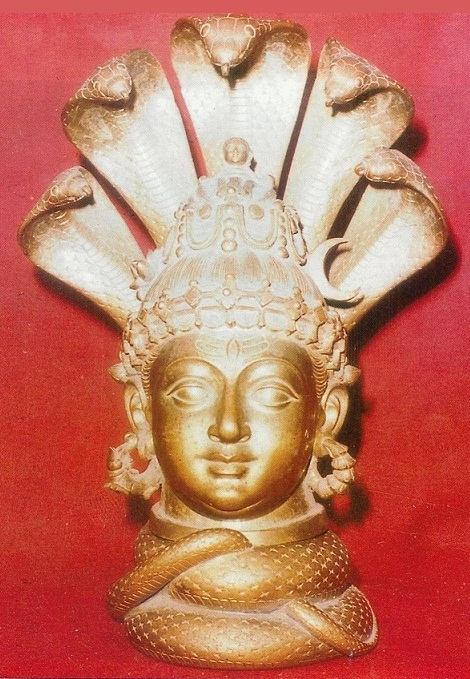

Lord Chander Mouli Iswara - 300 year old Pancha
Loha statue. Lord Garuda with folded hands stolen from Puri Temple.
Cultural Vandalism and Colonialism:
The colonial powers, to reinforce their dominance and add a veneer of respectability,
collected art objects from the colonies.
Greed, arrogance and lack of respect for ancient Civilization are root causes
for this attitude.
A Nataraja stolen from the
Easwaran temple in the Tiruvilakkudi village, Thanjavur, in 1978, was traced
with the help of Interpol to the
Kimbell Art
Museum, Fort Worth, Texas and
returned to its sacred seat.
(image source:
The Plunder
of Art - By
Hamendar Bhisham Pal).
***
Britain,
France and Spain rose to power in the medieval darkness.
They conquered countries of far and near and traded
with them and soon the history of the victim country became the grandeur of the
ruler’s home. The process was repeated four hundred years later –
that is in the 20th century – when the
United States of America and a few European nations
amassed so much wealth that they could buy or steal the
culture which they lacked. In the thirties, the national museums and State
governments of the USA went on a treasure hunt. They bought copiously valuable
treasures in India from unscrupulous traders and the money-hungry princes. Art
pieces like paintings and old scriptures were also not spared.
The colonial powers, to reinforce their dominance and add a veneer of respectability,
collected art objects from the colonies. Thus, one sees the famous Cleopatra’s
Needle ending up in London.
The modern technique of plundering, bribery and corruption is a ‘civilized’
extension of the old hectoring spirit of the colonial powers of the 18th
century.
According to
Fredrick Engels: “The
old plundering and buccaneering
spirit which distinguished our common ancestors of the 16th and 17th
centuries. It is this spirit that made Colin Mackenzie
(1754–1821) was Surveyor General of
India,
in the 18th century to take away the best pieces of
Amaravati sculpture to the
British Museum.
India’s art heritage cannot be evaluated in terms of
money, it is priceless and cannot be replaced.
(source: The Plunder
of Art - By
Hamendar Bhisham Pal
p. 1- 80).
For more refer to
European, American Museums: Fortified Havens For Plunder From India – By
Radha Rajan
and
Cultural Dacoity - 2ndlook.wordpress.com
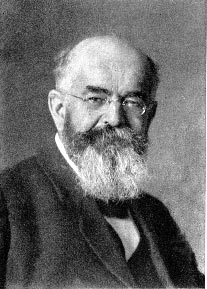 487.
Adlof Kaegi (1849 - 1923) was a Swiss India
scholar and classicist. He
studied ancient languages
and
Indian studies, taking a focus of its work on the study of Greek and Sanskrit
thought.
Among his academic
teachers were Rudolf von Roth and Karl Geldner.
487.
Adlof Kaegi (1849 - 1923) was a Swiss India
scholar and classicist. He
studied ancient languages
and
Indian studies, taking a focus of its work on the study of Greek and Sanskrit
thought.
Among his academic
teachers were Rudolf von Roth and Karl Geldner.
"Rig Veda is permeated by a lively
sympathy and love of nature." He adds:
"We have, in the Rig Veda, a literature
which well deserves, at least in extracts, to be known to every student and
lover of antiquity. The chief importance of the Vedas is not, indeed, found in
the history of literature, but it lies elsewhere. It lies in the extraordinary
fullness of disclosures, which this unique book gives to the student of
philosophy and the history of civilization.
In this regard, no other literature
can be compared with it, and though the aesthetic value of this relic of
long-vanished time has sometimes been exaggerated, yet its historical
importance, its value for mankind cannot be easily overrated....It best displays
the first development of intellectual activities of our race."
(source: Hinduism:
Triumphs and Tribulations - By S K Kulkarni
p. 18).
488.
Swami Devananda Saraswati
( )
Ishwar Sharan is the pen name of Canadian author, a Smarta
Dasanani sannyasi who took his Vedic initiation from a renowned mahamandaleswar
at Prayag in 1977. He was brought in the foothills of western Canada in a
God-fearing Protestant Christian family.
He was excommunicated from his small
Christian congregation. His experience of Christian institutions and West Asian
Muslim society helped him turn against the monolithic Abrahamic creeds which he
saw as imperialistic, belligerent, and life-threatening. He came to India in
search of spiritual direction and because Hindu civilization still gave an
honorable place to the Mother Goddess. The fact that Hindu civilization has
withstood centuries of Muslim and Christian aggression and survived where other
civilizations had failed was to his mind a very impressive cultural achievement.
He reached India in 1967 and
immediately went to Kashi where he lived on the ghats as a beggar.
In his interview with
Rajeev Srinivasan he has stated:
“I had fallen in love with Mother India and Hindu civilization. It is the best
civilization of the Great Mother Goddess. Like the great guru Adi Shankara I
believe she is the liberator of man and the reveler of truth. I became a
sannyasi because of Her. It is a sacrifice of love that I am still trying to
perfect.”
"Christian missionaries and Marxist
intellectuals have a mantra: There is nothing Hindu in Hindustan and nothing
Indian in India. According to them everything of value in Indian civilization
came from outside, from someplace beyond the pale of Sindh. They are aware of
the Hindu’s low self-esteem and seek to undermine it further.
Swami Devananda Saraswati is a great lover of Hindu culture and religion and is
deeply saddened that Hindus today have become second class citizens in their own
motherland because of a pusillanimous and weak-minded religious and political
leadership. He says that as long as Christianity continues to wage a socially
destructive war of aggression on Hinduism and take prisoners in the form of
unsophisticated credulous converts, its curious theories and unique claims must
be thoroughly challenged by Hindus of integrity and conviction.
"Devotion to a personal god is there in the Rig Veda
itself: “Oh, Agni, be easy of access to us, as a father to a son.”
Dr.
Pandharinath Prabhu tells us in his much-acclaimed book
Hindu Social Organisation that the very term
bhakti first appears in the
Svetasvataropanishad. Bhakti is there in the
Puranas and finds its best expression in the Bhagavad Gita; a better expression,
I must say, than is found anywhere in the Bible. Tamil
bhakti has its roots in the Tirumantiram,
ca. 200 BCE.
Hindu bhaktas direct their love and
devotion to Shiva and Murugan, Vishnu, Krishna and Rama, not to Jesus. Jesus has
failed in India! And failed and failed and failed again in India! Hindus do not
understand this process because Hinduism is spiritually self-sufficient and does
not require outside nourishment."
(source:
The Myth of Saint Thomas and the Mylapore Shiva Temple – By Ishwar Sharan
p. 363 - 384).
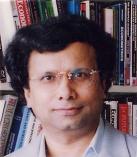 489.
Dr. Dipak Basu
( )
Professor in International Economics at
Nagasaki University in Japan has this to say:
489.
Dr. Dipak Basu
( )
Professor in International Economics at
Nagasaki University in Japan has this to say:
"Self-criticism is the fundamental part of the Indian philosophy."
"Thousands of years ago in the
Rig Veda,
the most important book of the Hindu religion and the first book composed in
Indo-European language group, it is written,
"Only that God in highest heaven knows whence comes this universes. He only
knows or perhaps he knows not" (Rig
Veda Book
10, Verse 129).
Indian philosophy was developed through continuous criticisms of existing ideas.
Hegel and Karl Marx did not invent Materialism. It was already there in 7th
century BC philosophy of Brishaspati, Kapil and Kanad in India. They along with
Gautam Buddha and Mahavir have denied the existence of God, nearly 2600 years
before Nietzsche. Chinese philosopher Confucius also denied the existence of
God. Zorathustra denied the existence of Mitra, considered to be the God in
ancient Persia and made a revolution in religious ideas. Thus, self-criticism is
not an exclusive Western virtue."
"Equality of Gender was not a Western virtue either as women were denied even
right of education until the middle of 19th century in the West and they did not
have civil rights even in Britain until 1928. However, in ancient India, one of
the seven stars of Ursa Major is named after a famous astronomer of ancient
India, Arundhuti. Rig Veda has mentioned the three women philosophers of ancient
India, Lopamudra, Gargi and Maitreyi, who have challenged their philosopher
husbands and others in open debates. Gender equality was a part of the ancient
India, but not of the West."
Talking of Ayodhya verdict he has observed that Ram was a Historical Person.
"Ram was mentioned not only in
Valmiki"s Ramayana,
but also in
Vyas"s Mahabharata
at four places -- Ramopakhayan, Aaranyak Parva, Drona Parva and Dashrath
Kathanak. In Rig Veda (10.60.4.4), there is a mention of Iksvaku, the ancestor
of Ram and the founder of Ayodhya. The Atharva Veda mentions Ayodhya as having
nine gates. The Atharva Veda (18.3.16) mentions the name of Vishwamitra,
Vashista the preceptor of Ram, and Bhardwaj.
A poignant and touching moment - Hanuman
presenting the ring to a sad Dewi Sita (Shinta) in a Kecak dance at the Ulawatu
Temple at sunset in Bali.
***

The Kecak dance of Bali featuring the
Epic of Ramayana.
The Ramayana
has been translated and adapted in the Javanese language. This tradition
principally in its Indian form is still a living force in Indonesia. The
Indonesian concept of chivalry is closely modelled on this epic and on Rama's
ideals. In the education of Indonesian girls frequent reference are made to the
lofty examples of Sita. The main river of Central Java, Sarayu, is named after
the Indian river on the bank of which was situated Lord Rama's capital, Ayodhya.
(©
2011
image source:
webmaster's own collection of photos taken during a
recent visit).

The Mahabharata in Kamasan style of painting at
the Klungkung Palace in Bali.
The other Indian epic,
the Mahabharata, is even more popular. It has been repeatedly
translated and adapted. The Mahabharata is like an encyclopedia of Hinduism
containing a wide variety of tales of heroic deeds and exploits. It appears to
have captured the imagination of Indonesian people, who consider themselves to
be the descendants of the heroes of the Mahabharata, and believe that all the
drama took place on their soil. The major hero of the epic, Arjuna, is the
nation hero of Indonesia. The name of leader of the Indonesian Revolution,
Sukarno, is taken from Su-Karna, a hero of the the Mahabharat.
(©
2011
image source:
webmaster's own collection of photos taken during a
recent visit).
***
According to ancient Indian chronology and Puranic tradition Ram was born in the
24th Treta Yuga (Great Age).
The Valmiki Ramayana
(Bal Kanda 18.8.9) mentions at the time of Lord Ram"s birth as "the ninth lunar
day of the bright fortnight of Chaitra, Punarvasu was in the ascendant and five
planets (the Sun, Mars, Saturn, Jupiter and Venus) appeared in the zodiacal
signs of Mesa or Aries, Makara or Capricorn, Tula or Libra, Karka or Cancer, and
Mina or Pisces respectively. Jupiter in conjunction with the Moon appeared in
Karka. From these, it is possible to calculate that Ram was born on January 10,
5114 BC, which means to say 7,122 years ago."
"According to Vedas, the world is 4.32 billion years old, and man arrived on
earth approximately two billion years ago. Man was created on earth in the
seventh manmantar of Vaivasvat Manu. The sun, planets, stars, earth, sea,
vegetation, flora and fauna were created in the earlier six manmantars. Western
scholars now agree that the earth is aged between 3.96 and 4.3 billion years."
In Europe, epics of Homer and The Bible are not considered as myths, but
informal history.
The ruin of Troy, described by Homer, is already excavated. Israel government
made serious efforts to excavate every places mentioned in The Bible to find out
its ancient past. In India as well,
S.R. Rao,
former chief of the Archaeological Survey of India, has discovered the ruins of
Dwarka submerged in water off the coast of Gujarat. Japanese ground Radar
Company Tojo-Vikas has found out ruins of huge places 30 meter under the ground
of Ayodhya.
Thus, it is most unscientific to rule out Ramayana, Mahabharata and Purana as
just myths, but not informal history of the ancient India.
(source: - By
Dr. Dipak Basu and ).
 490.
V Sundaram (1942 )
worked as Lecturer in Economics in Delhi University for two years till he joined
the Indian Administrative Service (I.A.S.) in 1965. He was allotted to Tamil
Nadu Cadre and has served with distinction in several high positions in Tamil
Nadu Government from 1966 to 1994. He sought his voluntary retirement from the
I.A.S. in 1994. He was the first Chairman of Tuticorin Port Trust.
He has authored several books
including Rama Setu—Historical Facts and Political
Fiction, Bandemataram Album, and Paramount
cry for a Hindu Nation.
490.
V Sundaram (1942 )
worked as Lecturer in Economics in Delhi University for two years till he joined
the Indian Administrative Service (I.A.S.) in 1965. He was allotted to Tamil
Nadu Cadre and has served with distinction in several high positions in Tamil
Nadu Government from 1966 to 1994. He sought his voluntary retirement from the
I.A.S. in 1994. He was the first Chairman of Tuticorin Port Trust.
He has authored several books
including Rama Setu—Historical Facts and Political
Fiction, Bandemataram Album, and Paramount
cry for a Hindu Nation.
He writes passionately about Hindu
affairs and the future survival of Hinduism thus:
"Are
Hindus helpless refugees in their own ancestral homeland? It is my inalienable,
indivisible, inexorable and immutable birth right to demand the creation of a
Hindu Nation. I am not ashamed or afraid of declaring from the housetop that I
am a political Hindu, a cultural Hindu, a spiritual Hindu, an economic Hindu, a
nationalist Hindu, an internationalist Hindu and above all a cosmopolitan Hindu.
I am forced to assert on these lines because Sanatana Dharma, Hindu Religion,
Hindu Society, Hindu culture and Hindu ethos are under the siege of certain
lethal international(!) forces today. The whole of India is getting converted
into a 'Nazi Land' of pseudo-secularism with a clearly defined and declared
agenda for the decimation and destruction of Sanatana Dharma, Hindu Society and
Hindu culture. In Nazi Germany, there was only one criminal gang consisting of
one 'Herr' Hitler, one Goebbels, one Goering, one Ribbentrop, one Von Papen, and
one Himmler. But in the wretched India of today, we have more than half a dozen
similar gangsters in each political party, all united in their resolve to
destroy all remnants of Sanatana Dharma and Hindu culture.
There are
many Hindus who cherish the great spiritual traditions of Hinduism and its
scriptures like the Gita and Upanishads in which this glorious tradition is
enshrined. But they do not cherish with an equal conviction, much less
enthusiasm, the Hindu society which has honored and preserved these traditions
and scriptures against the onslaughts of external invaders and influences down
the Ages. Again, there
are many Hindus who proclaim with great confidence that Sanatana Dharma or
Hinduism can never die. Finally
there are many Hindus who are legitimately proud of Hindu art, architecture,
sculpture, music, painting, dance, drama, literature, linguistics, lexicography
and so on. But all of them fail to notice the fact that this great wealth of
artistic, literary and scientific heritage will die if Hindu society which
created it is no more there to preserve, protect and perpetuate it.
The sudden death of Hindu society is no longer a theoretical eventuality which
is either remote or cannot be envisaged. This great society is now besieged by
the same dark and deadly forces which have overwhelmed and obliterated many
ancient societies. Suffering from a loss of its 'élan', Hindu society has become
a house divided within itself. Its beneficiaries seem to be impotent in taking
necessary steps for ensuring its survival because they themselves have fallen
victims to hostile propaganda from the wicked forces of Islam, Christianity,
Nehruvian Secularism, menacing Marxism, and above all
Hindu-baiting Macaulayism.
Presiding over all these forces with a determined agenda for destroying all
things Hindu, we have the Islam-embracing, Christianity-coveting and
Hindu-hating UPA Government in New Delhi
under the triangular stranglehold of
Roman Catholicism, Pan-Islamism and Communism in the name of
'pseudo-secularism'.
Hindu society which has survived the onslaught of Islamic marauders and Western
freebooters for centuries should indeed be regarded as one of the great wonders
of world history. In the normal course Hindus should have come into their own
after 1947 and created a new era of social and cultural renaissance in free
India. Thanks to the politically motivated policy of Nehruvian Secularism,
Hindus have become third class citizens in our own country. They are no longer
the honored citizens of our land. Like leprosy in British India, a permanent
stigma seems to have stuck to the terms 'Hindu' and 'Hinduism' in today's India.
They have become terms of abuse in the mouth of that very elite which the dumb
Hindu millions have raised to the pinnacle of power and prestige with their
blood, toil, sweat and tears. "
"No
one can dispute that the traditional homeland of Hindus is the Bharatavarsha. It
is a distinct geographical entity. There are few nations in the world the
natural boundaries of whose homeland are as clearly drawn as that of ours. And
the Hindus have been intimately associated with this land, lived on it,
developed their culture and civilization on it, and regarded it as sacred soil
for at least 6000 years, if not more. When I say Bharatavarasha in the sense of
the Motherland of the Hindus, I do not refer to the boundaries of the truncated
India created by Jinnah, and Nehru in 1947, but to those of our traditional
homeland which extends continuously from Gandhara to
Kamrup and from Kashmir to Kanyakumari.
This basically has been the concept of Hindu Nationhood or what we call Hindutva
or Hindu Rashtra from times immemorial. "
We Hindus are a nation
The Hindus have been the primordial citizens of Akhand Bharat from the beginning of pre-history
and they cannot be denied a spiritual and physical space of their own in their
own native land. The saddest part of the story is that the dastardly policy of pseudo-secularism
has made all the peace-loving Hindus neglected, sidelined and discarded refugees
in their own native land."
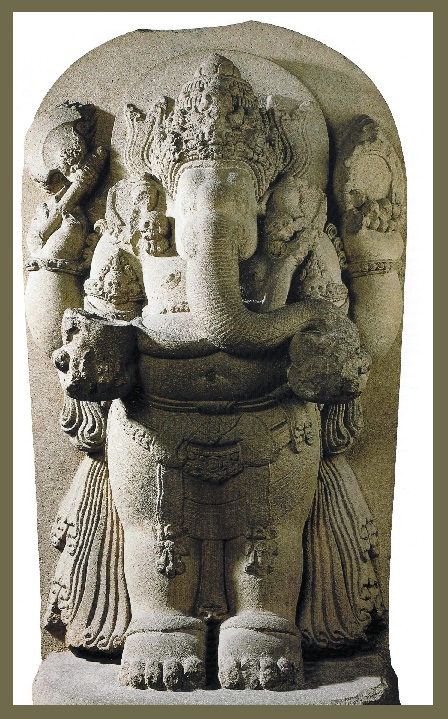
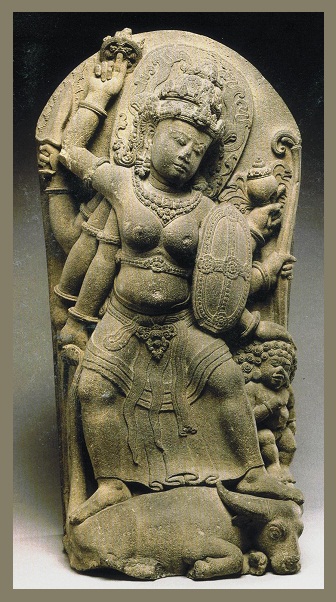
Standing Lord Ganesha from
East Java, Mt. Sumeru 14th century volcanic stone now on display in
Rijks
Museum, Netherlands. Lord Ganesha is thee remover of obstacles and the
god of wisdom.
Goddess Durga from Candi Jawi,
East Java 13th century volcanic stone.
Mpu Tantular Museum, Surabya, Java.
Goddess Durga is the feminine power contains the energies of the gods. Each of
her weapons was given to her by various gods.
(image source:
Worshipping Siva and Buddha - By Ann R Kinney
p. 28 and 130).
Refer to chapters on
Ethereal Prambanan,
Hindu Art, Sacred
Angkor and Suvarnabhumi.
***
"The
fact that 'We Hindus are a nation' is by no means a new idea. This idea has been
with us from the dawn of history.
Nations do not
get destroyed. We Hindus are a nation just
as the Germans are a nation, the Armenians are a nation, the Kurds are a nation,
the Jews are a nation. Germany was divided into two after the II World War. But
this did not abate their nationhood. Within 50 years, they achieved
reunification of their motherland and the nation has been restored to its
original character and complexion. "
During the first
National movement in
1905 'Swadeshi
Movement' in undivided Bengal. No one at that time had the slightest
doubt that 'We Hindus are a Nation'. That is why in Calcutta city, on the first
day of the agitation 50,000 people took a collective oath before
Goddess Kali in the Holy Kalighat Temple to
the effect that 'we shall throw the British out of our
homeland'.
The famous historian R.C.
Majumdar rightly concluded that he saw no difference in those days
between Sanatana Dharma and Indian Nationalism. "
"All the Roman Catholics have their own nations. All the Protestant Christians
have their own nations. All the Muslims have their own nations. The Hindus have
been the primordial citizens of Akhand Bharat from the beginning of pre-history
and they cannot be denied a spiritual and physical space of their own in their
own native land. The saddest part of the story is that the
dastardly policy of pseudo-secularism
has made all the peace-loving Hindus neglected, sidelined and discarded refugees
in their own native land."
(source:
Cry for a Hindu Nation - By V Sundaram - boloji.com).
491. S K Kulkarni
( ?
) was in the Indian Audit and Accounts Service and is presently the director of
finance and administration at the Nehru Center, Mumbai. He is also the author of the
book, Hinduism: Triumphs and Tribulations and is a prolific writer.
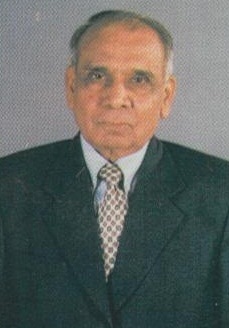 "Upanishadic roots have given
rise to a strong tree of philosophy, which has grown many branches. A variety of
interpretations are the hallmark of Hindu philosophy. The basic profound
philosophy has something for everyone depending on his or her approach and
interest.
"Upanishadic roots have given
rise to a strong tree of philosophy, which has grown many branches. A variety of
interpretations are the hallmark of Hindu philosophy. The basic profound
philosophy has something for everyone depending on his or her approach and
interest.
Even today, scholars continue to interpret the Bhagawad Gita, and
surprisingly, gain new perspectives each time. Different perspectives of the
fundamental principles of the philosophy have given rise to five major schools
of Upanishadic interpretation. They are Advaitavada or Monism of Shankaracharya,
Vishistadvaitavada or Pure Monism of Vallabhacharya, Dvaitadvaitavada or
dualism-non Dualism of Nimbarkacharya and Dvaitavada or Dualism of Madhavacharya.
These are, however, not contradictory to, or opposing, each other. These are
different paths leading to a common destination.
Many more men of wisdom have,
during the last hundred years, interpreted the philosophy of the Vedas, and the
Upanishads in particular. They are of the view that the Upanishads basically
attempt to unravel the mystery of the universe, which surrounds us
systematically and in a comprehensive manner. A burning spirit of inquiry
characterizes them more than anything else. The following hymn is an indication
of the zest to explore the unknown.
From the unreal lead me to
the real,
From darkness lead me to light,
From death lead me to immortality. -
Brihadaranyaka Upanishad 1.3.28
The Upanishads contributed
tremendously to the development of Indian culture by laying the foundation of
Hinduism. They went far ahead of the Vedas in terms of metaphysical speculation
and enunciated most of the basic doctrines of Hinduism. In every Upanishad, one
comes across hymns expounding one or more of these doctrines, the important ones
being,
1. The concept of all
pervading which is immutable and eternal.
2. The concept of an
omnipresent, omnipotent, omniscient, personal God.
3. Concept of salvation,
defining it as emancipation from the cycle of life and death.
Whatever lives is full of
the Lord, Claim nothing, enjoy, do not covet anyone's wealth.
Of a certainty the man who
can see all creatures in himself, himself in all creatures knows no sorrow. "
This asserts that the entire
human race is linked together by virtue of possessing a common soul.
"It is a heartening
historical fact that the ancient Hindu civilization has shown a tremendous
capacity to face and survive internal conflicts and external onslaughts. Many
scholars have expressed surprise that the Vedic religions should have survived
for thousands of years in spite of great and social and political upheavals and
the terrible onslaught of invaders.
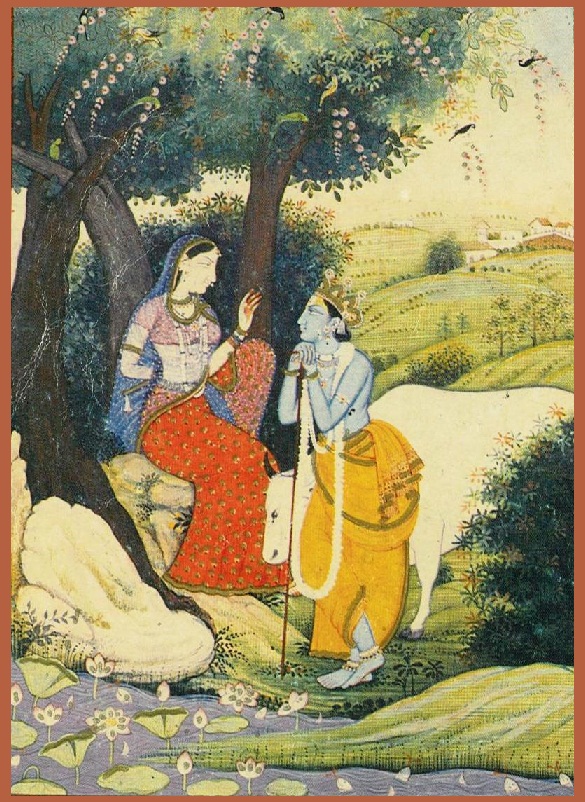
Radha and
Lord Krishna of the Bhagawad Gita in the forest.
It is a
heartening historical fact that the ancient Hindu civilization has shown a
tremendous capacity to face and survive internal conflicts and external
onslaughts.
***
Unfortunately, some modern Indian historians
and intellectuals, influenced by western culture and imported "isms", have
attempted to demean the flow of ancient civilization by highlighting only its
temporary negative aspects. But, as on many occasions in the past, the
civilization, with its tremendous capacity to absorb the mudslinging, still
continues its eternal flow."
(source:
Hinduism: Triumphs and Tribulations - By S K Kulkarni p. 1 - 30).
 492.
Michael
Comans
aka
Sri Vasudevacharya
( )
He is a senior disciple of Sri Swami
Dayananda Saraswati, one of the great contemporary teachers of Advaita Vedanta.
Michael Comans attended Swami Dayananda Saraswati's two-and-a-half year
residential course in Advaita Vedanta in the early 1980s. He later received a
Ph.D. from the Australian National University, Canberra, and taught in the
Department of Indian Studies at the University of Sydney. He is the author of
two books including The Method of Early Advaita Vedanta: A Study of Gaudapada,
Sankara, Suresvara and Padmapada published by Motilal Banarsidass.
492.
Michael
Comans
aka
Sri Vasudevacharya
( )
He is a senior disciple of Sri Swami
Dayananda Saraswati, one of the great contemporary teachers of Advaita Vedanta.
Michael Comans attended Swami Dayananda Saraswati's two-and-a-half year
residential course in Advaita Vedanta in the early 1980s. He later received a
Ph.D. from the Australian National University, Canberra, and taught in the
Department of Indian Studies at the University of Sydney. He is the author of
two books including The Method of Early Advaita Vedanta: A Study of Gaudapada,
Sankara, Suresvara and Padmapada published by Motilal Banarsidass.
He has observed that:
"Only the Hindu life's ideal based on Dharma, Artha,
Kama and Moksha can save humanity from its distress. The solution to the
problems of the world is not Socialism but Hindu way of life. This is such a
science of life, which, while studying about life, does not divide it into bits
and pieces but considers the whole life as an indivisible unit."
Hinduism has a deep philosophy that
appeals to me. While initially it was only the philosophy that brought me into
its fold, today I am comfortable with much of its religious aspects as well.
"As regards Advaita, it has a view of
tolerance. Because of the profundity of the Advaita understanding of God, it can
allow others to be as they are."
(source: Philosophic
bent of mind - thehindu.com).
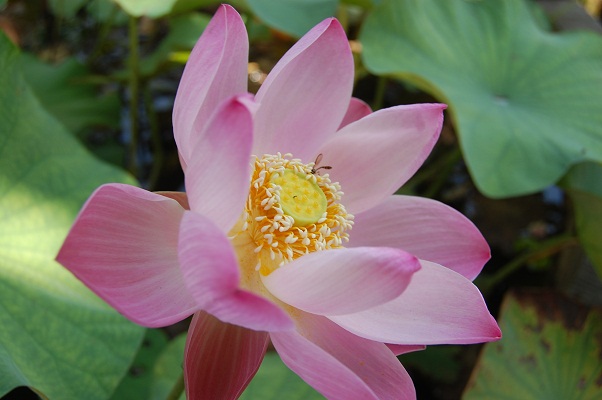
A Lotus in Bali -
In Hinduism the lotus is a symbol of the sun and of creation, and of perfection
and purity.
Its origin is generally assigned to the primeval waters (Taittiriya Brahmana,
1.1.3,5), from which it emerged on the eve of creation or cosmic renewal as a
thousand leafed plant from Visnu's navel (representing the center of the energy
of the universe). Seated on the opened flower was the Lord Brahma. Thus in
Hinduism the lotus became the "visible representation of the womb of creation.
(©
2011
image source:
webmaster's own collection of photos taken during a
recent visit).
***
 493.
Romesh
Chunder Dutt (1848 - 1909) was
a Bengali civil servant, economic historian, writer, and translator of Ramayana
and Mahabharata and author of
several books including The Economic History of India.
493.
Romesh
Chunder Dutt (1848 - 1909) was
a Bengali civil servant, economic historian, writer, and translator of Ramayana
and Mahabharata and author of
several books including The Economic History of India.
He
writes:
"Women were held in higher respect in India than
in other ancient countries, and the Epics
(The Ramayana and Mahabharata)
and old literature of India assign a higher position to them than the epics and
literature of ancient Greece. "
Hindu women enjoyed
some rights of property from the Vedic Age, took a share in social and religious
rites, and were sometimes distinguished by their learning. The absolute
seclusion of women in India was unknown in ancient times."
(source:
The
Civilization of India - By R. C. Dutt p 21-22).
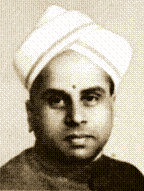 494.
Ramchandra
Dikshitar (1896 – 1953) was a Professor of historian at Madras
University and author of several books including War in
Ancient India and Studies
in Tamil language and history. In a special chapter of his
book, he waxed poetic over his country’s contribution to aviation –
inventing it!
494.
Ramchandra
Dikshitar (1896 – 1953) was a Professor of historian at Madras
University and author of several books including War in
Ancient India and Studies
in Tamil language and history. In a special chapter of his
book, he waxed poetic over his country’s contribution to aviation –
inventing it!
Said the
proud historian back in 1944:
“No
question can be more interesting in the present circumstances of the world than
India
’s contribution to the science of aeronautics. There are numerous
illustrations in our vast Puranic and epic literature to show how well and
wonderfully the ancient Indians conquered the air. To glibly characterize
everything found in this literature as imaginary and summarily dismiss it as
unreal has been the practice of both Western and Eastern scholars until very
recently. The very idea indeed was ridiculed and people went so far as to assert
that it was physically impossible for man to use flying machines. But today what
with balloons, aero planes and other flying machines a great change has come
over our ideas on the subject.”
…”the
flying vimana of Rama or Ravana was set down as but a dream of the mythographer
till aeroplanes and zeppelins of the present century saw the light of day. The
mohanastra or the “arrow of unconsciousness” of old was until very recently
a creature of legend till we heard the other day of bombs discharging poisonous
gases."
(source:
Technology
of the Gods: The Incredible Sciences of the Ancients - By David Hatcher Childress
p. 168 - 170).
 495.
Samuel Taylor Coleridge
(1772 - 1834) was an English poet,
Romantic, literary critic and philosopher who, with his friend William
Wordsworth, was a founder of the Romantic Movement in England and a member of
the Lake Poets.
495.
Samuel Taylor Coleridge
(1772 - 1834) was an English poet,
Romantic, literary critic and philosopher who, with his friend William
Wordsworth, was a founder of the Romantic Movement in England and a member of
the Lake Poets.
Wordsworth's friend,
collaborator, and "his spirit's brother," Coleridge was also guided by the same
vision. Indeed he went a step further in dabbling with the supernatural, as is
reflected in "The Rime of the Ancient Mariner (1798). Although Coleridge did not
use Indian material, he was greatly attracted by the words and pictures of old
tales, some of which must have come from India. His Eastern inspiration is to
some extent attested to by the elusive yet arresting images in "Kublai Khan"
(1797). This influence is also displayed in his Circassian love song, "Lewti."
Coleridge
emphasized the Neoplatonic tradition and introduced into England the new
idealism of Germany, which was influenced by Indian thought.
More than any other English
Romantic, he was responsible for bringing about the literary revolution which
regarded imagination as the most important creative facility.
His cardinal doctrine,
reminiscent of the Vedanta, was the wholeness of, and continuity in,
self-consciousness as the basis of mental experience which was all absorbed into
a single dynamic force, the divine spark in each person, the "I" of every
rational being, the free will which was the eventual source of religious faith
as well as of genuine perception.
Coleridge
was well aware of Indian literature, as is illustrated by his letter to
John Thelwall
(1764 - 1834) in which he said he often wished to sleep or die, or "like the Indian
Vishnu, to float about along an
infinte ocean cradled in
the flower of the Lotus
and wake once in a million years for a few minutes."
(source: India and World Civilization - By D. P. Singhal p. 246).
India inspired the creative
imagination of Samuel Taylor Coleridge through Coleridge's poetical relationship
with the Hindu deity Vishnu the Preserver.
The images of Vishnu in Coleridge's works are of two kinds. On the one hand
there is the peaceful image of a Vishnu floating on a lotus leaf on the sea of
Infinity:
The God, who floats upon a Lotos leaf,
Dreams for a thousand ages; then awakening,
Creates a world, and smiling at the bubble,
Relapses into bliss.
His letter to Thelwall gives an insight into the personal
significance of the Hindu myth as one of creation for Coleridge.
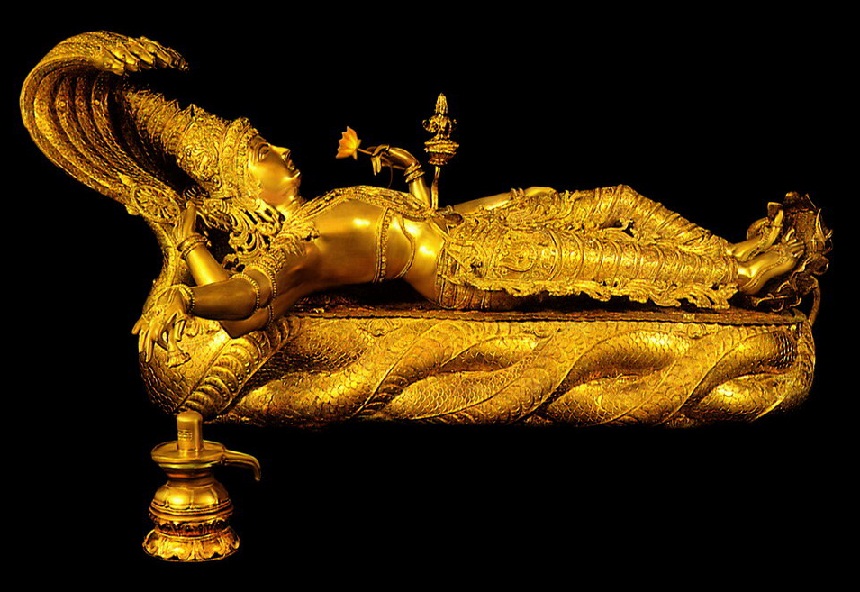
Lord Vishnu
on Ananta nag (a symbol of eternity) holding a lotus floating on the infinite ocean.
Pure Gold statue from
Sree Padmanabhaswamy Temple in Kerala.
Refer to
chapter on Hindu Art and
Glimpses XXVIII
***
("The Night Scene: A Dramatic Fragment") And on the other, there is Vishnu from
the Bhagavad Gita representing the totality
of the universe in one body "with many mouths and eyes; with many arms, and
legs, and breasts; . . . touching the heavens, and shining with such glory. "
Coleridge's sources for the two
images of Vishnu illustrate how important the Indie research done during the
Oriental Renaissance of the eighteenth century was for the formation of his
perception of the Hindu deity. The very fact that the image of Vishnu occurs at
the end of a process which Coleridge describes as a "spiritualization
of his intellect" expresses the deep significance of the image for
him. When his mind yearned to know something "one and indivisible," he thought
of the Indian Vishnu floating on the "infinite ocean," contemplating through an
expanse of time composed of millions and millions of years. The contrast between
the few waking moments of Vishnu with the limitless flow of time emphasizes the
concept of timelessness even further. The solitary deity on the vast ocean
symbolically expresses contemplation, withdrawal, silence, and awakening - all
conditions congenial for poetical creation.
The Vishnu image recurs in Coleridge's dramatic fragment "The Night Scene" in an
exchange between Sandoval and Earl Henry as the latter describes his farewell of
Oropeza, Daughter of Don Manrique, the night before his departure for the army;
Life was in us:
We were all life, each atom of our frames
A living soul - I vow'd to die for her:
Oh! there is joy above the name of pleasure,
Deep self-possession, an intense repose.
Sandoval answers "with a sarcastic smile":
No other than as eastern sages paint,
The God, who floats upon a Lotus leaf,
Dreams for a thousand ages; then awakening,
Creates a world, and smiling at the bubble,
Relapses into bliss.
Sandoval offers the image of Vishnu on his lotus bed to Earl Henry as a symbol
for the "intense repose" he desired. In "The Night Scene" Coleridge views the
solitude on the "boundless ocean" as an atmosphere ideal for creation. The God
is not asleep; he is in a realm of dreams, which is a state of bliss. He awakes
to create a world which is only a bubble in comparison to all that can be
created. Vishnu's smile is suggestive of the smile of the Buddha who has gained
enlightenment. Vishnu who perceives his creation to be a bubble possesses an
insight into the indefinable nature of Infinity.
(source:
Coleridge,
Vishnu, and the Infinite – By Aparajita Mazumder).
His poetry reveals the
connections with the Hindu view of life.
Coleridge's
philosophical and spiritual itinerary; it originally contributes in showing the
strong impact the first translations of some texts of Hinduism had on the
authors psyche, philosophical approach and poetical inspiration.
In addition, Coleridge's
unpublished manuscript notes found in one of the Abb J. A. Dubois seminal
studies of India present a proof of the poets long
standing interest in and frequentation of Hinduism. Inclined to investigate the complexities of the human
condition, both poetically and philosophically, Coleridge tried to resolve the
extremes of human existence through a synthesis of both Western and Oriental
visions through which the universe ultimately emerges as an organic cosmos
rhythmically unfolding through an intricate web of influxes, echoes and
correspondences.
O! The One Life within us
and abroad,
Which meets all motion and becomes its soul,
A light in sound, a sound-like power in light,
Rhythm in all thought and joyance every where –
Methinks, it should have been impossible
Not to love all things in a world so fill’d;
Where the breeze warbles, and the mute still air
Is Music slumbering on her instrument.
(source:
The one life: Coleridge and Hinduism - By A Riem Natale,
Antonella Riem).
 496. R D Ranade
(1886 - 1957), a great
Marathi scholar and philosopher-saint of the twentieth century wrote extensively on Upanishadic philosophy. He has remarked thus:
496. R D Ranade
(1886 - 1957), a great
Marathi scholar and philosopher-saint of the twentieth century wrote extensively on Upanishadic philosophy. He has remarked thus:
"The
Upanishads supply us with various principles of thought, and may,
thus, be called the Berecynthia of all the later systems of Indian philosophy.
Just like a mountain which, from, its various sides, gives birth to rivers which
run in different directions, similarly the Upanishads constitute that lofty
eminence of philosophy, which, from its various sides, gives birth to rivulets
of thoughts, which as they progress onwards the sea of life, gather strength by
the inflow of innumerable tributaries of speculations which intermittently join
these rivulets, so as to make a huge expanse of waters at the place where they
meet the ocean of life."
"It is thus, Ranade points out,
"that
we see in the Upanishads roots of Buddhism as well as Jain philosophy, of Samkhya as well as Yoga, of Mimansa as well as Saivism and of the
theistic-mystic philosophy of the Bhagawad Gita."
(source: Hinduism: Triumphs and Tribulations - By S K Kulkarni
p. 1 - 32).
497.
John Campbell Oman
(1841 - 1911) Professor Natural Sciences in Government College Lahore and
English author of several books including The Great
Indian Epics: the stories of Ramayana and Mahabharata and
Indian Life: religious and social and
The Mystics, Ascetics, and Saints of India.
He has astutely observed:
"The word Sadhu stands as a general name for any
Hindu ascetic, monk, or religious mendicant, without reference to sect or
order."
"Sadhus are and have always been two conspicious
figures in India to escape the notice of any intelligent European traveler in
that country from Megasthenes to Mark Twain to Peter Loti.."
"The existence of
sadhus,
were "no recent importation, no modern excrescence, but has been flourishing in
India, a veritable indigenous growth, from a time which dates many centuries
before the advent of Christ, or even the preaching by Buddha of the eightfold
path leading to enlightenment and deliverance . . ."
"Indeed
sadhus
have been a fixture of India from time immemorial, and Indian epics as well as
the vast storehouse of Indian literature are rife with allusions to the exotic
and the mundane aspects of the life of these men. (There was the rare woman "sadhvi,"
now estimated to be about 10 percent of ascetics.) Oman wrote that these men
"command the respect and even the superstitious veneration of the vast multitude
of their countrymen, who believe that they are often, if not always, possessed
of almost unlimited supernatural power for good or evil."
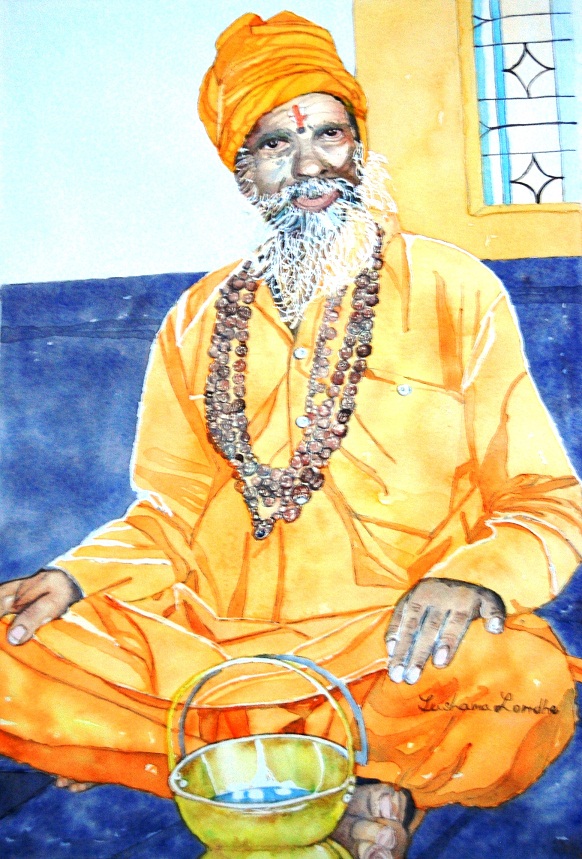
A bearded ascetic/sadhu in saffron robes with a brass Kamandalu (pot) in the hallowed temples of the Trimbakeshwar Shiva temple in
Nasik, India. The temple is located at the source of the Godavari River and is
a religious center having one of the twelve Jyotirlingas.
Sadhus
have been a fixture of India from time immemorial, and Indian epics as well as
the vast storehouse of Indian literature are rife with allusions to the exotic
and the mundane aspects of the life of these men.
(image source:
Webmaster's personal collection of art).
Refer to
Chitra Gallery.
***
As a rule sadhus are cautiously
reticent but they may occasionally be induced to tell of long wanderings and
strange expressions. I have met some of them in Kashmir on their way from Puri
by the Bay of Bengal to the lone ice caves of Amarnath and it need not be
doubted that men who range the whole Indian Peninsula, as these do and wander
over the eternal snows of the Himalaya, find food for lofty thoughts and deep
emotion in the mystery and grandeur of the scenes which often meet their gaze."
"Indian poets (rishis
or sages) early appreciated the aesthetic charms of nature and the soothing calm
of solitude; and we may be sure that even the unsocial sadhu in his journeying
among the giant mountains of Himalaya looks with wondering admiration upon the
vagueness and inscrutability of their wayward moods - their vast silent snow
fields, their whispering rills and furious torrents.""They come from all ranks
of life and from all hereditary castes into which Hindu society is divided."
"In ancient legislation the sadhu
bulks largely, and he has a unique place in the romantic tales of more recent
date.
"The very spirit of the East is
embodied in the sadhus, and it is perhaps not too much to assert that he is so
important a feature in the life and civilization of India.." He has quoted
from the work of Elisee Reclus.
 Élisée Reclus
(1830 - 1905)
also known
as Jacques Élisée Reclus, was a renowned
French
geographer,
writer, who wrote thus in his 19-volume masterwork
La Nouvelle Géographie universelle, la terre et les hommes
("Universal Geography"):
Élisée Reclus
(1830 - 1905)
also known
as Jacques Élisée Reclus, was a renowned
French
geographer,
writer, who wrote thus in his 19-volume masterwork
La Nouvelle Géographie universelle, la terre et les hommes
("Universal Geography"):
"Not only in India and to
the Hindus is Indraprastha, a name of reverence; for away in distant Cambodia,
the people believe that they are descended from Indians who immigrated into the
Southern peninsula from the far off banks of the Jamuna, and the stupdendous
remains of Angkor and Battanbang, near the great lake of Tonle Sap, point
unmistakenly to Hindu origin and bear silent witness to the existence in the
remote past, of a powerful and flourishing kingdom of Indian origin."
(source:
The Mystics, Ascetics, and Saints of India
-
By John Campbell Oman p. 1 - 6 and p. 94).
"The Indian epics are precious
relics of the spring time of Eastern thought, revealing a new singularly
fascinating world, which refers every remarkably from that depicted in the epic
poetry of Western lands."
"The
Ramayana
and
Mahabharata
structures are so colossal, so composite and in many respects so beautiful ..."
(source:
The Great Indian Epics: the stories of Ramayana and
Mahabharata - By John Campbell Oman p. 2 - 11).

498.
Hieun Tsang aka Xuanzang (603 - 664
CE) Chinese pilgrim who came to India - was a famous Buddhist
monk, scholar, traveler, and translator that brought up the interaction between
China and India in the early Tang period.
He had remarked
that:
"India
is a country where saints and sages appeared at different times, succeeding one
after another, in order to enlighten the people”
(source : online sources).
499.
John Levy ( - 1976) was born into a wealthy
aristocratic family. Levy was an English mystic, teacher, musician,
and artist who was an expert in Asian folk music. He had his own radio program
about this subject on the BBC.
At one point in his life Levy decided to give away his entire fortune and go to
live for a time in India with only a loincloth.
Levy spent many years there with his guru,
Krishna Menon,
assisting him with the English translations of his guru’s books
Atma Darshan
and
Atma Niviriti.
He then brought his knowledge of
Advaita
Vedanta
to the west in an accessible form through his teaching work and the publication
of his two books.
(source:
John Levy - sentientpublications).
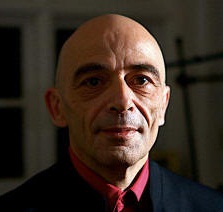 500.
Acharya Peter Wilberg (1952 - )
of thenewyoga.com
is an Indian spiritual teacher born in North-West London, United
Kingdom, of German and German-Jewish parentage.
He is an independent, non-institutional
thinker whose life-long philosophical studies
has
stated that:
500.
Acharya Peter Wilberg (1952 - )
of thenewyoga.com
is an Indian spiritual teacher born in North-West London, United
Kingdom, of German and German-Jewish parentage.
He is an independent, non-institutional
thinker whose life-long philosophical studies
has
stated that:
“The belief that an icon or idol is a cruder, more naive or ‘primitive’ object
of religious reverence or worship – or even an unholy object – is itself as
crude as the belief that painting, sculpture and music are cruder or more
‘primitive’ mediums of expression of spiritual truth than the written or spoken
word."
"In reality they can be wondrous mediums. As for the attack on idol worship by
the Abrahamic faiths – Judaism, Christianity and Islam – this is nothing if not
hypocritical. For not only do they have their own idols – the Christian crucifix
or the Muslim Kaaba for example. They also revere their own holy books as sacred objects in themselves – not only decorating them or filling them with
iconic images but going so far as to effectively elevate them to the status of
religious ‘idols’. Thus in Jewish religious practice, the holy scroll of the
Torah is consecrated, housed in a sacred chamber, veiled and unveiled, carried
round in procession, its tassels kissed etc.”
“From a Hindu perspective, meditation of a ‘Murti’, whether in the form of an
image, symbol or three-dimensional idol, no more negates an acknowledgement of
God’s formless or invisible omnipresence in all things than does carrying
round and studying an artefact of paper and ink in the form of a Holy Book such
as the Bible or Koran. On the contrary, precisely by virtue of its tangible,
material form, the Murti makes it easier to experience the presence of the
divine in all things, to understand that things are just as much symbols of the
divine as words are..”
(source:
Murti – On the wonders of Idol worship – By Peter Wilberg – thenewyoga.com).
Show
in alphabetical order
Top of Page



Page < 1 2 3 4 5 6 7 8 9 10 11 12 13 14 15 16 17 18 19 20 21 22 23 24 >